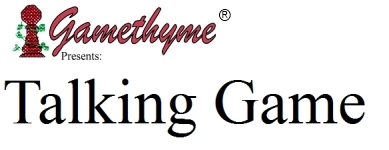Here's the same warning I've put on each of the other Multiple Uses posts: The following is my analysis. There are very good players who disagree with me. There are very good players who agree with me.
This is my sixth set-by-set entry in the series - I'm skipping the French-Only sets for now, but will get back to them, because they bear discussion. This entry will discuss Dungeon Twister: Prison.
Base Set Average Movement: 3.625
Base Set Average Strength: 2.00
Prison Average Movement: 3.875 (Includes 3 characters repeated from the original base set)
Prison Average Strength: 1.875 (Includes 3 characters repeated from the original base set)
As you can see, this set is a hair faster and not quite as strong as the original base set was. This set also includes three repeat characters - the Wizard, the Cleric, and the Mechanork.
I'm not going to rehash the Wizard, Cleric, or Mechanork - you can find them here.
Chris did a great job with this set - there isn't much in the way of ambiguity about what these characters are meant to do. This makes Prison an excellent intro to the game, so this is more of an overview of these characters than necessarily multiple uses for them, although I hope to hit a few of those as well.
Colossus
The Colossus is an excellent Hitter. In fact, he's the strongest non-Dragon Hitter in the game. He has a few advantages over the Dragons in this role, too - he's only worth 1 VP if killed and he isn't vulnerable to the DragonSlayer.
He's slow, but he can help your Runners by breaking the portcullises open (just like the Warrior could previously). Just be sure to back him up - there are three characters in this set alone who can run right between his legs. I suggest leaving an empty space between him and his backup (unless there is an intersection to slip through) - it makes Group Combat more likely.
Naga
The Naga's ability to move through the Arrow-Slits combined with his Speed of Six makes him an excellent Runner. You can also use him very effectively as a flanker to set up Group Combat, or as a retriever to grab items you want (or want to keep away from your opponent). Give him a Rope, and he's nearly unstoppable anywhere on the map.
Banshee
For 2AP, the Banshee may push any character in line of sight back one space. The Banshee is a ranged Ring of Repulsion. Those of you who have played Fire and Water are cringing already. The ability to push a character back a spaces is a nice quick way to kill off your uncareful opponents.
A lot of people complained at how dramatically the Ring changed play when Fire and Water was released. By including the Banshee in the new base set, people get to start paying attention to positioning right off the bat. The Banshee also introduces a bit more Action Management by having a special ability which requires an additional Action Point.
With the Banshee's speed of 5, it's also a good Runner, especially if given a rope.
Backstabber
The backstabber can open Portcullises like the Thief. She's a bit slower and has the same basic combat stats as the Thief, but she has +2 Strength in Group Combat if at least one unwounded friendly is involved.
She's completely straightforward in terms of ability, and I expect a lot of people will have her following the Colossus around. I'd argue that doing so is a waste of the Backstabber's ability - she should follow one of your runners around. Pairing her with the Colossus means you'll have combat strength of 9 + card, which is completely overwhelming. Pairing her with the Naga gives you 6 + card, which is nearly as difficult to overcome and means you have a fast-moving flexible hit squad that doesn't look all that scary until after their first combat.
In extended play, pair her with the Assassin.
Telepath
The Telepath chooses his opponent's combat card in one-on-one combat. This ability reminds me a great deal of the Weapon Master from Paladins and Dragons, but it's both more and less useful - for one, the Telepath has a base strength of zero. Since he can't choose to force his opponent to play a '0,' he will have to play at least a three in order to beat even the weakest characters. And that number goes up the more often he's in combat. If your opponent hasn't thought through this themselves, his ability looks pretty scary. It means your opponent may devote significant resources to taking the Telepath out, making him an effective decoy.
The best use I've found for the Telepath involves cleaning up wounded opponents - since the Strength for wounded characters is zero already, it's easier for the Telepath to be useful against them.

(odd, I left a comment earlier...)
ReplyDeleteEric, I'm following your blog now. Really interested in the Dungeon Twister content. I like the strategy of backing the Backstabber with the Colossus or Naga.
Love the idea of using the Telepath for finishing off wounded characters.